 |
| ©Everything Audio Network |
Brevis...
Price: starting at $79,995
Likes: deep bass, electrostat' tone
Dislikes: beyond my card limit
Wow Factor: the ultimate ML speaker
More info: MartinLogan Neolith
by John Gatski
Last year, Martin Logan released its new flagship Neolith electrostatic speaker and those who appreciate the intricate, spacious, enveloping sound of electrostatic audio transmission (and have $80,000 in their bank accounts) began pining for more information on these high-end transducers.
Knowing that review samples would be rare, I took up MartinLogan’s offer to do a sampling of the speaker’s audio performance at Overture Ultimate Audio in Wilmington, Delaware — a high-end audio dealer and one of the nicest hi-fi dealers I have had the pleasure of visiting in some time.
MartinLogan has introduced a new flagship electrostatic loudspeaker. Announced at the 2014 Munich High-End audio show, the Neolith is ML’s new high-end design to showcase the company’s latest electrostatic advances. According to ML, “While (the original) Monolith was our inspiration, Neolith’s technical execution and unrestrained performance evokes MartinLogan’s legendary Statement evolution 2 loudspeaker.”
Features
The Neolith features a 22-inch x 48-inch electrostatic transducer with a radiating surface 35% larger than that of the previous ML size leader, the Statement e2. As MartinLogan’s largest electrostatic radiating surface to date, Neolith is designed with ML’s proprietary, curvilinear electrostatic transducer technology, implemented into larger panels, to transmit the audio into very large rooms.
 |
| Neolith's 48-inch electrostatic panel |
To match the electrostatic's exquisite midrange and treble projection, ML has equipped Neolith with massive, bass power; a 15-inch, rear-firing, ported woofer and a 12-inch, front-firing, sealed, mid-bass woofer to deliver deep, clean bass down to an impressive spec of 23 Hz.
Unlike models such as Montis, which is designed with an on-board, powered subwoofer, the Neolith subwoofer’s passive design allows audiophiles to single-wire or bi-amp the speaker with their choice of high-performance, audiophile grade, solid state or tube amplifiers.
To enable clean bass and uncolored sound from the electrostatic panel, Neolith was designed with an extremely dense composite material, creating an “ideal” baffle — with a high-mass design — that reduces vibrations that result from reactive forces of the powerful woofers
Why electrostatic
Components—stators, a diaphragm, and spars (non-conductive spacers that keep the tall assembly stationary) — assembled as a sandwich. The diaphragm is an ultra-light film impregnated with an electrically conductive material and stretched taut between two stators, which are perforated steel sheets coated with an insulator. When the speaker is operating, the diaphragm is charged with an electrostatic field of fixed positive voltage. The two stators, between which the diaphragm is stretched, are charged with voltages of equal strength but opposite polarity. These charges occur in instantaneous alternating pulses, according the signal received from your audio equipment. When the charge on one stator is positive, the charge on the other is negative.
The combination of the custom-designed, rear-mounted 15-inch and front-firing, 12-inch passive bass drivers delivered stunningly tight, low bass at a loud level that perfectly matched the electrostatic panel’s balance.
Because like charges repel and opposite charges attract, the diaphragm's constantly positive charge will force it to move forward or backward depending on the stator charges. With this movement, an electrostatic transducer translates an electrical audio signal into the diaphragm motion that produces sound waves in your room.
While traditional cone loudspeakers produce sound in response to the separate movements of many small parts (voice coil, former, diaphragm), an electrostatic transducer has only one moving part: the diaphragm. Its movement is instantaneous — with no time lag — enabling the diaphragm to trace even the most delicate sonic details with absolute precision. The diaphragm's surface area is much larger than any cone driver, giving the electrostatic transducer the ability to perform over an exceptionally wide frequency range without having to cross over to another driver.
MartinLogan engineers have made improvements to the electrostatic design with its own unique innovations. First, the electrostatic panel speaker’s components are fused in a proprietary “Vacuum Bonding” process via an aerospace adhesive with a claimed hold-strength that exceeds welding. Vacuum Bonding ensures uniform diaphragm tensioning, and facilitates the extremely tight tolerances necessary for the construction of such a precision transducer.
The stators that "sandwich" the diaphragm must be rigid enough to remain absolutely stationary — despite the strong electrostatic forces pushing and pulling them during operation. They must also be perforated to allow sound to pass through. MartinLogan said its MicroPerf design optimizes this tradeoff by reducing the size of the individual stator holes, increasing the effective radiating area of the diaphragm without compromising the structural integrity of the panel.
Also, MartinLogan's ClearSpar spacers strengthen the assembly across its width, ensuring the consistent tension of the Vacuum Bonded diaphragm between the stators with absolutely no visual or auditory obstructions.
MartinLogan's icing on the electrostatic cake (so to speak) is its Curvilinear Line Source (CLS) electrostatic panel. MartinLogan CLS electrostatic panels feature a gentle horizontal curve design that significantly changes the speaker's dispersion pattern, radiating a wide, enveloping soundstage, packed with detail.
 |
| Neolith earns "EAN Luxury Class Product of the Year" |
These ML design features — as well as the electrostatic speaker’s inherent dipolar radiation pattern — all contribute the “live” space impression while listening in a properly set-up room. According to MartinLogan, a true dipole transducer radiates with equal intensity from the front and back of its diaphragm, with the outputs in opposite phase. As a result, sound waves rippling out toward the sides meet at the speaker's edge and cancel, minimizing side-wall reflections with short relative arrival times.
This reduction in side-output minimizes interfering side-wall reflections, which can muddy the image. It frees the dipole radiation pattern to produce a generous amount of ambience-enriching late-arriving reflections off the wall behind your loudspeakers. At the same time, electrostatic panels maintain relatively limited vertical dispersion, which minimizes undesirable floor and ceiling reflections.
Behind the bass
The Neolith’s impressive, subwoofer like bass performance comes from a dual-driver arrangement. The front-firing, 12-inch mid-bass woofer operates from 60 Hz to 250-400 Hz (depending on the speaker’s onboard jumper settings). It has an extremely low moving mass — relative to its size. The low-mass, non-woven carbon fiber cone, mounted in a cast-aluminum alloy frame, is lightweight and rigid, for high efficiency when moved by its 3-inch copper-clad aluminum flat-wire voice coil. The low-inductance, single-layer, edge-wound coil (with copper-cupped pole piece) reduces intermodulation distortion caused by the changing inductance as the woofer's big coil moves back and forth within the gap.
The massive, 15-inch, rear-mounted, bass woofer supplies sub-60 Hz bass, down to almost 20 Hz (23 Hz, -3 dB). This custom-design, bass driver contains an extended throw assembly, with an efficiently vented, triple-shorting ring motor and quad-layer coil, to eliminate compression and distortion. The woofer also utilizes a rigid, extra-thick, anodized, aluminum-cone design, mounted in a stable cast basket.
 |
| Double-vented 15-inch woofer provides sub 25-Hz bass |
Neolith also features the proprietary Vojtko™ Filter crossover section, which is designed to handle massive amounts of external amplifier power, yet provide precise crossover slopes. In the low-pass crossover section, multiple, super-efficient 100V capacitors are placed in series and/or series-parallel to achieve 200V capability. This innovation couples increased voltage-handling with exceptional heat dissipation.
Aluminum-housed resistors mounted to substantial heat sinks draw off additional heat. Compact toroidal inductors keep large amounts of current flowing and eliminate magnetic interactions between the inductors, according to ML technical specs.
The high-pass crossover, which controls Neolith's electrostatic panel, features audiophile-quality polypropylene capacitors, chosen for their excellent performance characteristics, and air-core coils for precision inductance. Air-core coils are used to eliminate the hysteresis distortion ("magnetic memory") effects that are common with steel-based inductors.
Cables connections are made through five-way, audiophile WBT Binding Posts. The connectors’ fine silver filigree is highly conductive and claimed to be free from "eddy current" effects. These posts are fully insulated for shock protection and topped with an impressive, palladium-plated metal cap. The speaker can be operated with single-wire or bi-amp connections.
Onboard controls include “Deep Bass Adjustment,” reducing output by -4 dB or -8dB, and the Listening Distance Adjustment, which addresses electrostatic room/floor interaction by adjusting output relative to room dimensions; the settings are 3-meters (or less), 4 meters and 5 meters (or larger).
Spec-wise, the Neolith’s rated frequency response is 23 Hz to 22 kHz; sensitivity is listed at 90 dB/2.83v at 1 meter. Nominal impedance is 4 ohms. As you can tell from the Neolith’s company specifications, this is a big speaker: 74.8 inches tall (a little over six-feet tall) 34.2 inches deep and 30.3-inches wide and a weight of 385 pounds. It weighs as much as some console acoustic pianos.
Starting at $79,995 for the standard black finish; the upgraded finishes are Rosso Fuoco, a kind of rosewood color; Cordoba Red, Deep Sea Blue, Basalt Black, Desert Silver and Arctic Silver. The speaker is gorgeous when you see it up close.
The listening session/demo assured me that ML’s new flagship is a winner; it personifies the best in electrostatic design and can easily fill up cavernous rooms with that intricate, textured sound.
As an owner of the MartinLogan Montis, a midsize electrostatic that utilizes much of the company’s electrostatic design features — in conjunction with a powered, 10-inch bass woofer, I can attest to how well these speakers reveal the space between the instrument tracks of recorded music. The Montis are musically involving, and I expected the Neolith to project that electrostatic sonic character — but convey it in a much larger room — with increased deep bass. The Neolith also gives full amplifier control to the owner. The electrostatic panel, plus the bass drivers are powered by whatever amp the user wants to use from a 20 watts, all the way to 1,300 wpc.
The setup
For press auditions, MartinLogan sent out the Neolith on a demo road show. I and several other audio journalists did our trial at Overture Ultimate Audio hi-fi dealer in Wilmington, DE. Overture Ultimate Audio is owned by Terry Menacker, and he and his staff are known for their hospitality, as well as their fine lines of audiophile products.
The speakers were set up in the hi-fi salon’s biggest listening room. The Neoliths were powered by Spectral Synthesis DM-400 mono-block amplifiers, Spectral DMC-30 preamp and a Spectral SDR-4000sl CD player. All cables were MIT.
The room had been setup and tuned for the Neoliths, and through the various types of music that were played, it was spot on. Although I brought a generous sample of 24 bit, hi-res and DSD music, the dealer’s CD system did not allow for playing of my typical test tracks. Thus, I relied on the “house” playback, which provided some pretty good tunes, nonetheless.
The audition
Being familiar with the ML sound, courtesy of the Montis, the Neolith’s sonic characteristic was not unexpected — an ultra-open soundstage with spacious layering of the instruments across the front and the dipole reflective radiation that helps focus the reflections to get that much more of the sonic realism out of a loudspeaker. Whether it was Pop, Classical or Jazz, or Acoustic, that ML sound was always recognizable.
In the large room with the 5-meter setting, the speaker sounded best, to my ears, near the back of the room. My Montis does a good job in a small-to-medium room, but in a large room, it cannot project anywhere close to the Neolith. Not enough panel, not enough bass to fill a big room.
The Neolith gets you the detail, the space and the deep bass with no problem. The limit is how much amp you want to put into it. With the 15-inch and 12-inch bass drivers, the low end was deep and tight, a very musical bass with not a hint of mid-bass loading or unnatural plumpness. Musically, it is as good as a high-end, separate subwoofer. Complements also to the Spectral amps, with their dynamic bass precision, which also flatters these speakers.
My favorite cut that I heard during the demo was Shirley Horn’s “You Won’t Forget Me,” the title track from the 1991 jazz CD. That evocative, velvety vocal from the late Ms. Horn, a rich trumpet tone from Miles Davis, the precisely centered bass and Billy Hart’s metronome-like timing on snare rim and cymbals sounded beautiful through the Neolith pair. The cymbals, even via CD resolution, were open and airy with just the right metallic sheen. The double bass was forceful, yet taught, without overhang. All in all, a gorgeous recording rendered in way that only an electrostatic can.
 |
| Premium parts are used throughout the Neolith. Note the binding posts. |
I would love to get my ears in front of a pair of Neoliths — with my hi-res music, DACs and a Pass Labs Xs-150 super-Class A or Rogue Audio Medusa hybrid amp and perhaps I will in the near future. But the listening session/demo assured me that ML’s new flagship is a winner; it personifies the best in electrostatic design and can easily fill up cavernous rooms with that intricate, textured sound.
With a beginning price tag of nearly $80,000 per pair, the Neolith, obviously, is not a budget speaker. There are audio aficionados who can afford and buy these luxury-class hi-fi products. Just like there are car buffs who spend their money on a Ferrari, Lamborghini, Porsche, etc. The Neolith is proof of how good a speaker you can build when costs is not an obstacle.
The verdict
In closing this demo/review write up, I would like to thank Terry Menacker, president; and his crew at Overture Ultimate Audio, for their kind hospitality, as well as the MartinLogan product folks and sales/PR staff, for letting me listen to the Neoliths. The demo was well worth my time.
As an owner of MartinLogan Montis electrostatic, I can personally attest that the much-larger Neolith takes that detailed, sonic layering and dispersion and exponentially increases it by a factor of 10 — especially in a big room. Although my dealer demo was CD-only, the combination of the custom-designed, rear-mounted 15-inch and front-firing, 12-inch passive bass drivers delivered stunningly tight, low bass — to a loud level that perfectly matches the electrostatic panel’s balance. The Neolith’s low end is tight, forceful and imposing.
If you have the cash and a big-enough room to let the speakers breathe, the MartinLogan Neoliths will reward you with hour after hour of gorgeous music. I can’t wait to hear a pair with hi-res. Based on what I heard at the Delaware demo, it is an honor to give the Neolith the EAN Stellar Sound Award, and I also selected it for the EAN 2014 Luxury Class Audio Product of The Year.
John Gatski is publisher/owner of the Everything Audio Network. Articles on this site are the copyright of the Everything Audio Network©. Any unauthorized use, via print or Internet, without written permission is prohibited.
John Gatski is publisher/owner of the Everything Audio Network. Articles on this site are the copyright of the Everything Audio Network©. Any unauthorized use, via print or Internet, without written permission is prohibited.






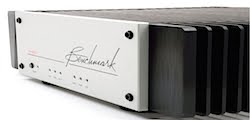


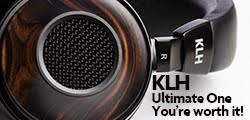
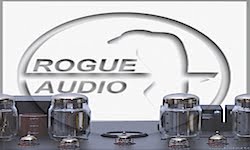
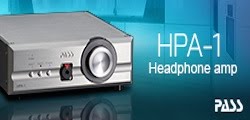

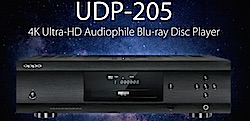
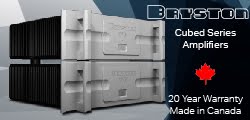

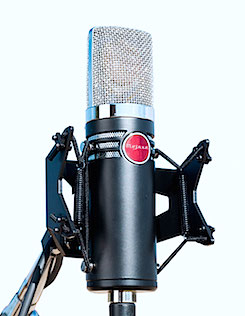
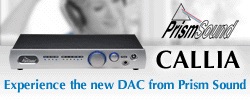
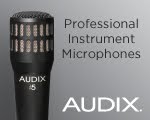








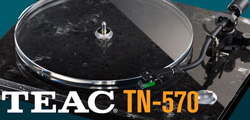


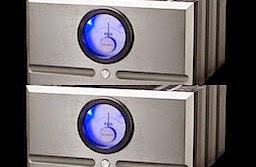



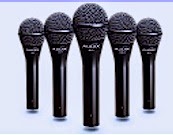


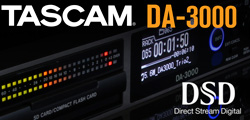

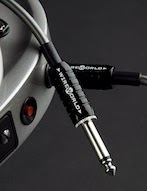

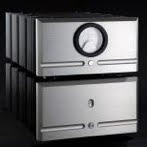









1 comment:
Maybe they have potential but the one demo i heard at Toronto's TAVES 2015 left me cold. Maybe it was the source components but we'll never know as they hid everything behind curtains except the Neoliths. Roberta Flack's "killing me Softly" was nothing like I'd ever heard before… and not in a good way. It sounded like tons of bizarre digital processing going on resulting in a sound that was antiseptic, synthetic and completely lacked in subtlety. The distributers are supposed to be audiophiles so how did they not notice? Were they deaf, or just lacking discernment? What gives? I don't know but I'm not ready to write the Neoliths off until I hear a proper demonstration by people with their hearing intact.
Post a Comment